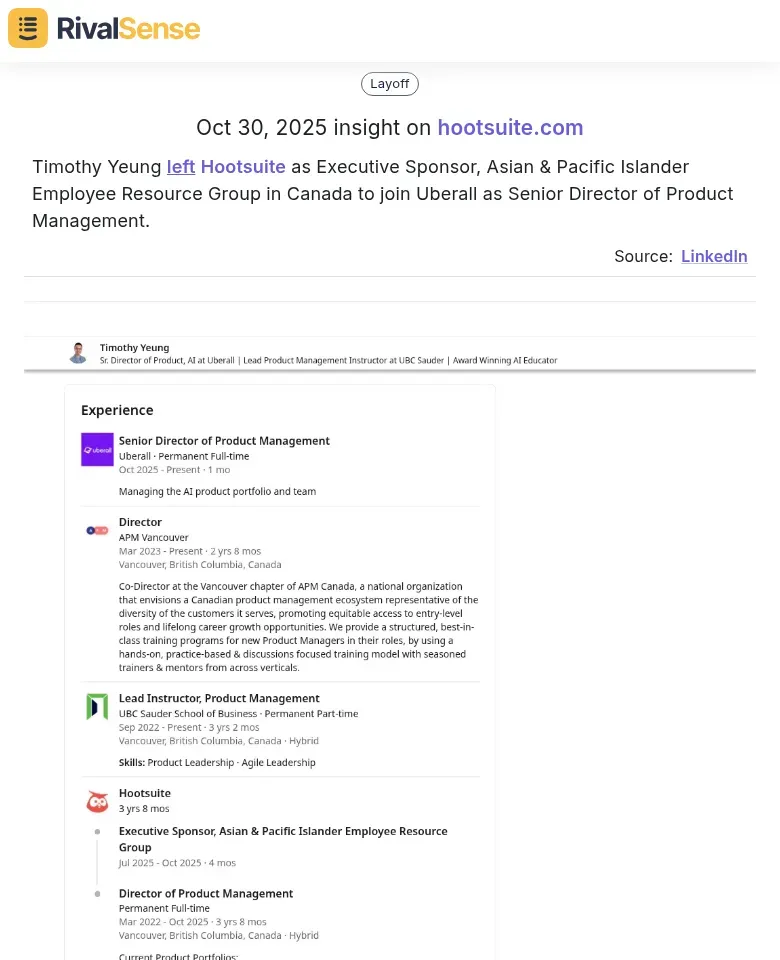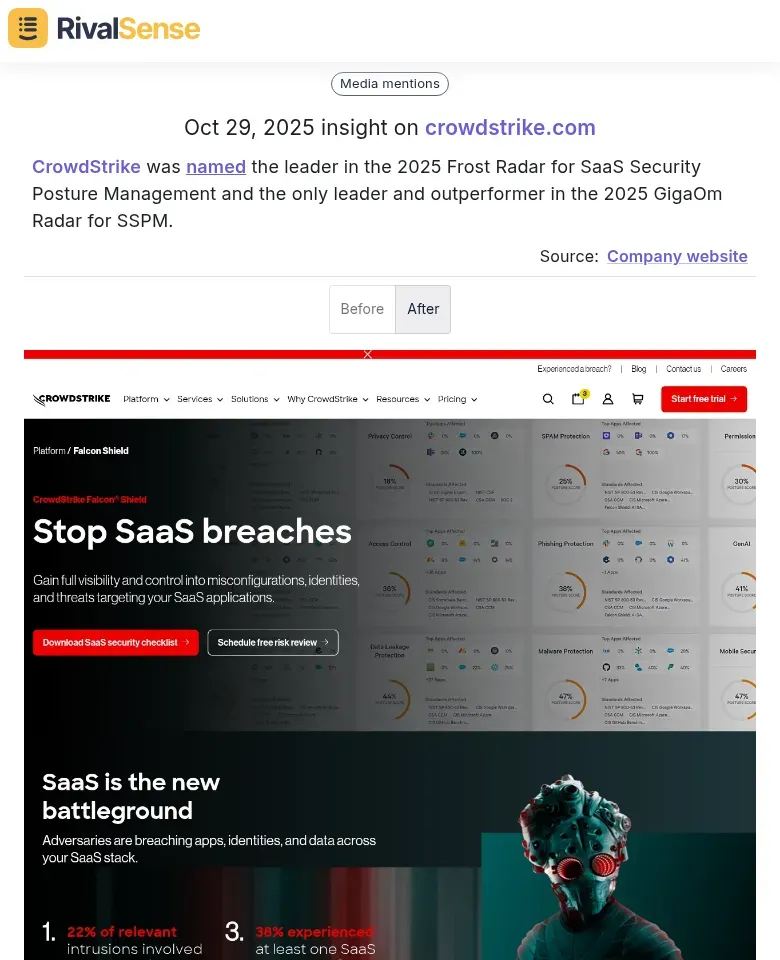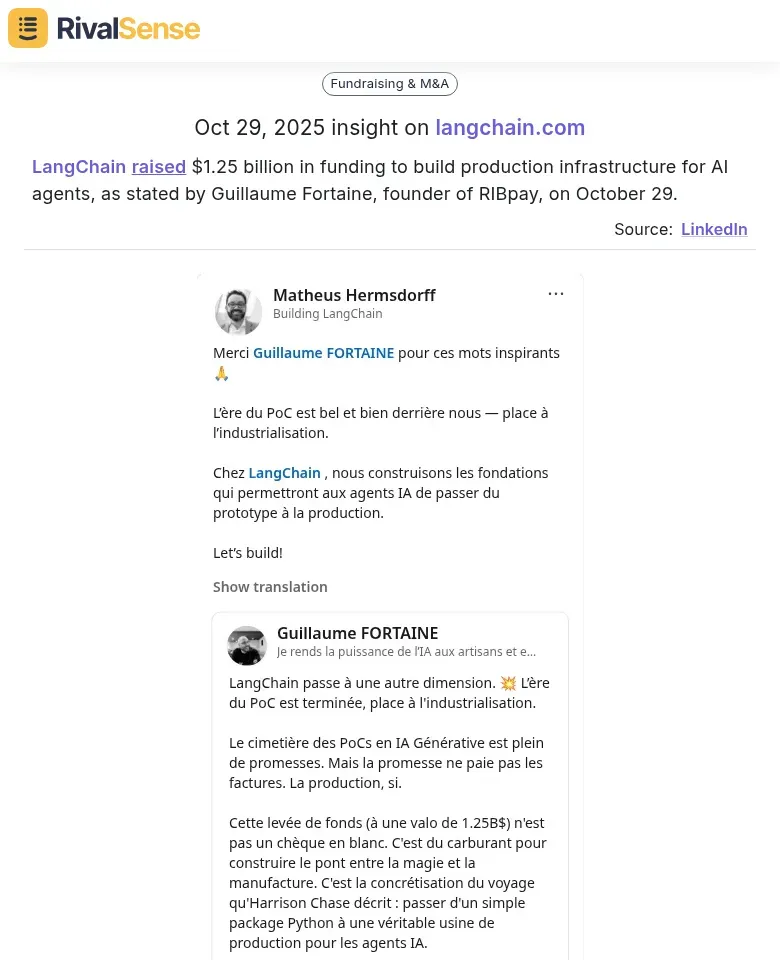Advanced Tactics to Analyze Competitor Marketing Strategy on Influencer Platforms
Competitor marketing strategy on influencer platforms involves systematically analyzing how rivals leverage influencers to achieve business goals. For B2B companies, this means tracking competitors' influencer partnerships, content themes, and engagement metrics on platforms like LinkedIn, Twitter, and niche industry forums. These platforms are crucial for B2B marketing as they enable thought leadership, lead generation, and brand credibility through trusted voices. Analyzing competitors provides a strategic advantage by revealing gaps in your own strategy, identifying high-performing influencers, and anticipating market trends.
🔍 Practical steps to get started:
- Identify key competitors and their influencer collaborations using tools like RivalSense.
- Monitor engagement rates and content performance to spot successful tactics.
- Assess the alignment of influencer content with competitors' core messaging.
This proactive approach helps refine your strategy, avoid costly missteps, and capitalize on untapped opportunities in the influencer landscape.
Identifying and Tracking Competitors on Influencer Platforms
Identifying and tracking competitors on influencer platforms is the foundation of effective competitive analysis. By systematically monitoring their activities, you can uncover trends and opportunities for your own strategy. Start by searching for industry keywords and analyzing top-performing content to spot key players.
Tools like RivalSense automate competitor tracking by monitoring influencer collaborations, campaign launches, and engagement metrics in real-time. Set up alerts for competitor mentions, new posts, or campaign hashtags to stay updated.
📋 Actionable checklist for tracking:
- Use platform analytics to identify competitors' top influencers.
- Track campaign frequency and content themes across platforms.
- Monitor audience sentiment and comments for deeper insights.
💡 Tip: Leverage social listening tools for cross-platform data and create a competitor dashboard for quick reviews. This continuous monitoring allows you to adapt strategies swiftly and capitalize on gaps in their approach.
Analyzing Competitor Content and Engagement Tactics
Analyzing competitor content and engagement tactics provides insights into what resonates with your target audience. By dissecting their posts, you can learn from their successes and failures to refine your own campaigns. Begin by categorizing content types—such as videos, carousels, or stories—and examine messaging for emotional triggers, value propositions, and calls-to-action.
For instance, if a rival uses user-generated content to build trust, note how it drives engagement. Next, measure engagement metrics by calculating rates (e.g., likes + comments + shares / followers) to compare effectiveness. Track viral posts to understand why they succeed, perhaps due to how-to videos or storytelling formats.
📊 Checklist for content analysis:
- Log content types and themes weekly in a spreadsheet.
- Record engagement rates for top-performing posts.
- Map posting times to engagement spikes for optimal scheduling.
💡 Tip: Use tools like RivalSense to monitor these metrics over time and experiment with A/B testing based on insights. This data-driven approach helps you emulate high-performing strategies while avoiding pitfalls.
Assessing Competitor Influencer Partnerships and Collaborations
Assessing competitor influencer partnerships reveals how they build relationships and drive results through collaborations. Understanding these dynamics can help you identify potential partners and improve your own alliance strategies. Start by identifying collaborators using social listening tools and hashtag analysis across platforms like Instagram, TikTok, and YouTube.
Note audience demographics—such as age, location, and interests—and engagement rates to evaluate fit. Analyze collaboration formats, including sponsored posts, takeovers, or long-term ambassador programs, and assess ROI by monitoring campaign metrics like engagement spikes and conversion mentions.
🔄 Practical steps for assessment:
- Create a competitor influencer matrix with partners, collaboration types, and audience overlap.
- Estimate campaign costs and compare performance across campaigns.
- Check brand alignment to ensure influencer values match competitor messaging.
💡 Tip: Use RivalSense to track partnerships over time, helping you spot trends and identify high-performing influencers worth approaching for your brand.
Extracting Insights and Adapting Strategies
Extracting insights from competitor data allows you to transform observations into actionable strategies for growth. By synthesizing information, you can identify strengths, weaknesses, and opportunities in the influencer landscape. Use a SWOT analysis framework to organize findings—for example, note competitors' high-engagement creators or poor audience alignment.
Then, develop strategies to differentiate your approach, such as targeting overlooked influencers or offering better creator incentives. Implement adapted tactics in phases, starting with A/B testing on a small scale, like collaborating with micro-influencers in a competitor's weak area.
📈 Checklist for strategy adaptation:
- Audit competitor campaigns monthly to stay current.
- Track influencer performance trends and adjust budgets based on ROI.
- Monitor KPIs like engagement rates and conversions to measure success.
💡 Tip: Continuously iterate based on data to stay ahead, and use competitive intelligence to innovate by filling gaps with unique content angles.
Real-World Competitor Insights from RivalSense
Integrating comprehensive competitor intelligence into your strategy goes beyond influencer platforms, providing a holistic view of market dynamics. RivalSense delivers insights on product launches, management changes, awards, and funding, which can directly impact influencer marketing decisions. Here are real-world examples and why they matter:
-
Management Changes: Tracking personnel moves can signal strategic shifts. For instance, RivalSense reported that Timothy Yeung left Hootsuite to join Uberall as Senior Director of Product Management. This insight is valuable because it may indicate new product developments or marketing initiatives that could influence influencer campaigns.

-
Awards and Recognitions: Monitoring industry accolades helps assess competitor credibility and content opportunities. CrowdStrike was named the leader in the 2025 Frost Radar for SaaS Security Posture Management. Such recognitions can be leveraged in influencer content to enhance brand authority and trust.

-
Funding and Product Updates: Keeping an eye on funding rounds reveals growth trajectories and potential market expansions. LangChain raised $1.25 billion to build production infrastructure for AI agents. This insight is crucial for anticipating new influencer campaigns or partnerships around innovative products.

By incorporating these types of insights, you can anticipate competitor moves and align your influencer strategies more effectively.
Conclusion: Leveraging Competitive Intelligence for Growth
Mastering competitor analysis on influencer platforms requires a systematic and ongoing effort to drive business growth. By consistently tracking partnerships, engagement patterns, and campaign frequencies, you can stay agile in a dynamic market.
📋 Competitor tracking checklist for continuous improvement:
- Conduct weekly reviews of competitor posts and influencer activities.
- Perform monthly analyses of influencer performance metrics.
- Assess partnership trends quarterly to identify shifts.
Proactively apply insights—for example, if competitors succeed with micro-influencers, test similar collaborations, or adapt creative strategies based on high-engagement content. Use competitive intelligence to innovate by identifying gaps and filling them with unique offerings.
🚀 Ready to enhance your strategy? Try RivalSense for free at https://rivalsense.co/ to automate competitor tracking and get your first competitor report today! This tool delivers weekly insights on product launches, pricing updates, events, and more, helping you stay ahead effortlessly.
📚 Read more
👉 How Reddit's Legal Action Against Perplexity AI Revealed Competitor Vulnerabilities
👉 LinkedIn Trend Analysis: Uncover Competitor Pricing Advantages
👉 Quick Tips: Key Account Assessment Hacks for Construction Leaders
👉 Data-Driven Competitor Insights: Hiring and Layoff Trends
👉 Real-World Competitor Analysis: Tracking ThoughtSpot's Product Evolution
